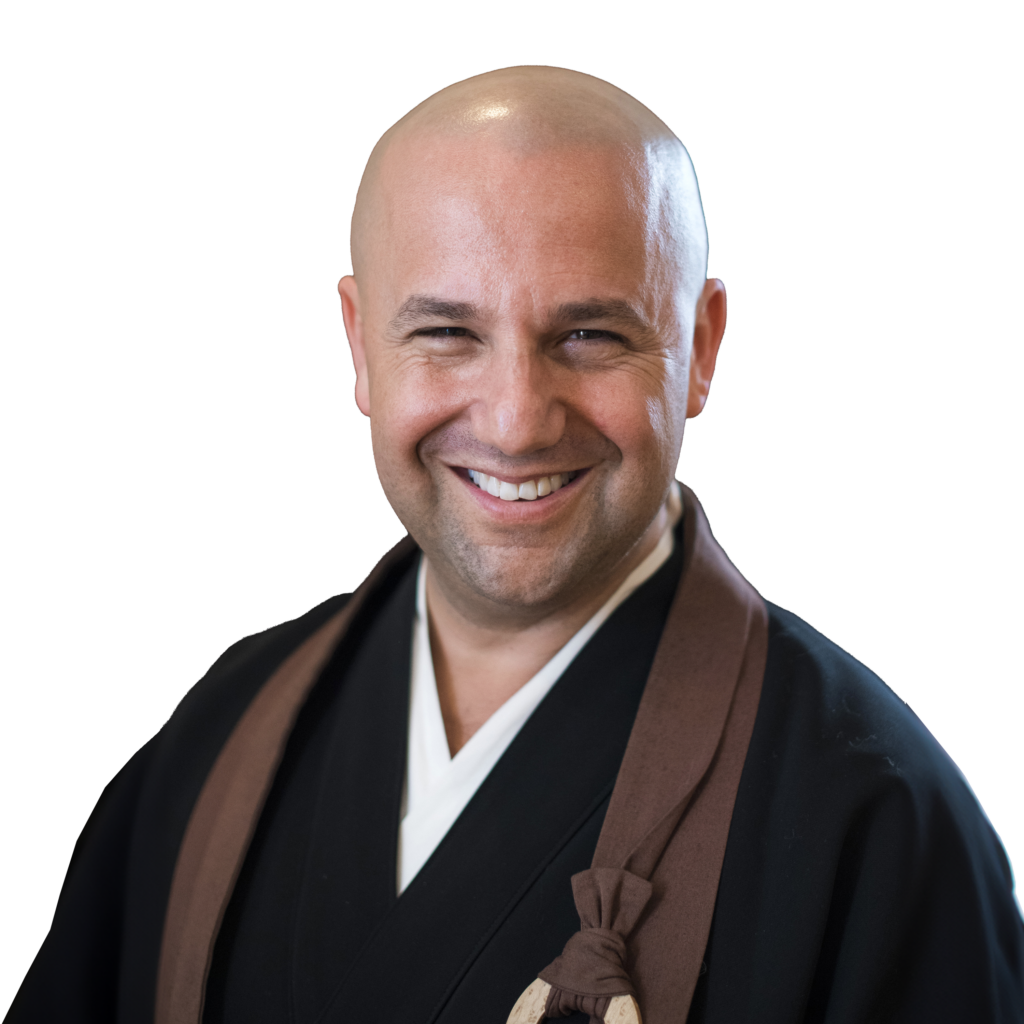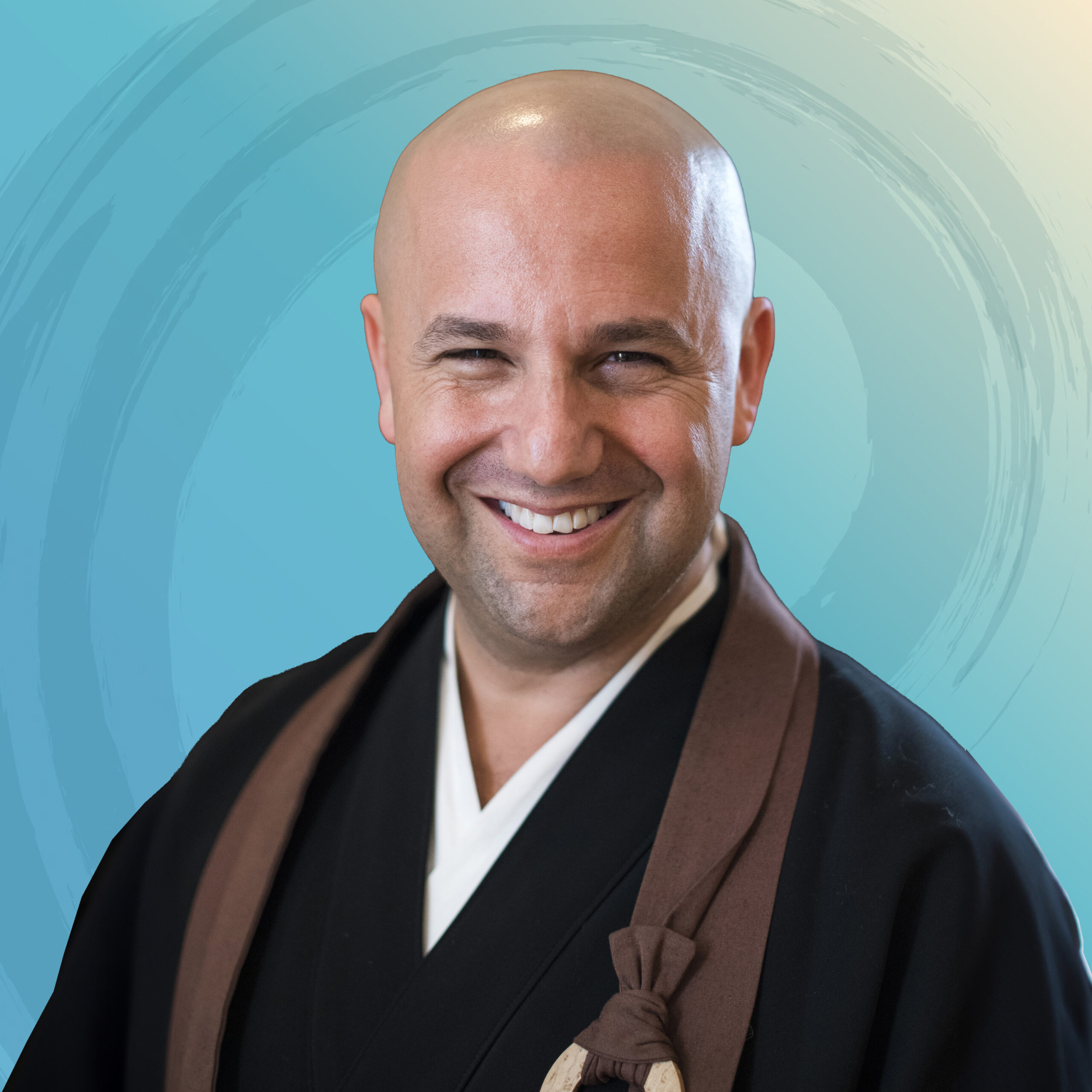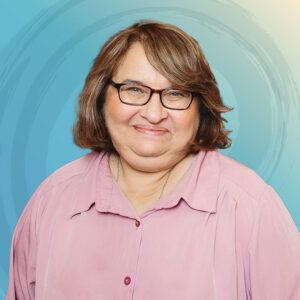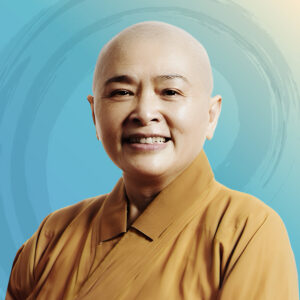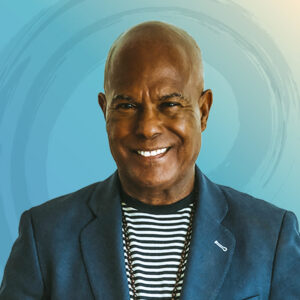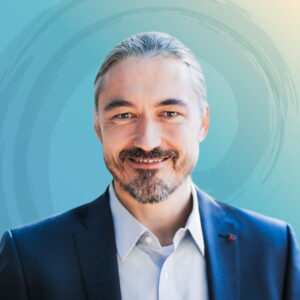Thomas Hubl: Welcome to Point of Relation. My name is Thomas Hubl. I’m sitting here with Koshin. Koshin, warm welcome. I’m happy to be with you here.
Koshin Paley Ellison: It’s very joyful to be with you, Thomas.
Thomas: So I think we have a deep passion in common. I think we both have an extensive meditation practice. And so I would love to hear from you a little bit, how did you get into your practice, into to Zen? How did you get into such a committed practice that’s also very powerful? And how do you feel your practice unfolds you, or how does it move through you and become your life? Maybe we can start there. I’m very curious about that.
Koshin: What a delightfully expensive series of questions. And I think that I always… My first imagination about this path began when I was eight years old, and I was laying on the white shag carpet with my grandfather, who was a refugee, and he used to love to collect National Geographic when it was this magazine. And we would sit there, and at that time it was lost native tribes, they would call them, all over the world and so amazing. And every once in a while, they would have these images of a city, a profile of a city. And this one, I remember we’re laying there together, I was around eight years old, and there was a series of photos of Tokyo. And I remember still the smell of the pages, remember when you could smell things and not magazines? And there was this photo of this monk in what’s called an ajirogasa hat, this large bamboo hat where you can’t see their eyes, so you just see the top of their mouth.
And just very still, with his begging bowl there in Japan. And all the other people in the photograph will blurred. And I remember thinking, “My goodness.” And reading, “Zen Buddhist Monk in Tokyo,” and I was like, “I want to be that.” Because I saw something, a lot of it of course is retrospective understanding, but the stillness amidst chaos. And I remember going home and telling my mom, “I know I want to be when I grow up. I want to grow up and be a Zen Buddhist monk.” And turns out I did.
And just one other story that really taught me about dedication was, I didn’t really know how to become a Zen Buddhist monk. And there was a movie called The Karate Kid where there was Mr. Miyagi, who was this amazing person, and was like a teacher, but not regular, like a school teacher. And it was also this echo of Star Wars, the same kind of developmental heroic journey where there are helpers along the way and teachers who teach you about life. And so I remember thinking, “Wow, I could find a teacher.” Because I felt like a whiny kid, and also I came from a background that was super chaotic, and as this common in communities with epigenetic trauma that my household was outwardly very high functioning, inwardly terrible. And lots of sexual violence and physical violence and verbal violence. It was just very violent, and very painful.
So I was really looking for, how do I find some sanity? How do I find some stillness like that photograph? And so Mr. Miyagi gave me a tip, well, at the local strip mall, and here in America, there are a lot of strip malls, and there was a karate school. And the teacher, Sensei White, was this amazing, very strong guy, and turned out to be a Zen guy, which was a great blessing. And he used to have us sit in seiza, where you’re on your knees, and your butt is on your feet. So just on the wood floor. So I just know right now these days, meditation is very comfortable and very soft. This was not soft. It was very hard and very painful, and excruciatingly painful. And I was 11 years old, and I remember him walking very slowly and surely around us and say, “You will never be free until you can be still in your pain.”
And I remember thinking, “Wow, this is like a super power.” I remember talking to him about that and he said, “I learned this from some Zen monks. And I was like… They’re like… And fast forwarding a bit is that I met the first Zen monk that I really started to interact with when I was 17. A man named John Daido Loori, who was a wonderful and deeply human person, but committed and wearing robes and living a life of vow. And I remember thinking, “That is actually what I want to be doing.” It’s so clear. So that through line really carried me. And I would be sitting in sessions and practices with him and then another teacher, and I would say, between 11 and 17, not so committed. A little lax. Really since then, and actually more now than ever, I feel totally committed. And it was actually really learning about what it means to dedicate one’s life is very powerful.
And so I feel a lot of gratitude for all the people before me. Like that monk in that photograph. We don’t know his name, and yet he inspires me, and inspired me, changed my life, and thank goodness that photographer and my grandfather. So it’s like if you start to, we all weave narratives about, “Oh, I’ll tell you the story,” but my story is also all of their story. That monk somehow, whatever happened to him that inspired him, and the photographer, whatever inspired that person. And so lately, these days, as a monk and as a teacher, and run a Zen center, and also I feel like very much a student of the sensei. And so when you run anything, you realize you’ve got to be very humble.
Thomas: Right.
Koshin: In the last couple of years, I have a new teacher, Zen teacher. Because I really realized I wanted to go a bit deeper into the connection, in particular with Dogen Zenji, who’s the founder of the Soto School, which is the branch of Zen that I practice in. And he’s a teacher at the main monastery and connected there and just wonderful, clear, loving, and very disciplined. So I would say, it’s just an ongoing adventure, maybe the best that I know. And there’s not really a moment that goes by that I have any regret about it. It just feels like it informs my life, and always is teaching me that it doesn’t really matter what I say, but it really matters what I do. And am I being caring? Am I being loving? Are my actions actually a benefit? To me are the most important questions.
Thomas: Beautiful. Wow, what a lovely story, or what a lovely unfolding. And I’m curious, when you look back at your meditation practice, how did it unfold you? What do you feel changed, or how did it open you or how did it show you more of life’s architecture, or however you want to frame that? What did meditation unfold in you?
Koshin: So I would say that it continues to. In the first 10 years or so, it felt from 11 to whatever that is, 21, it really feels like I’ve… In Zen, we actually often, the teaching from the ancestors tends to be like, “Don’t evaluate until 30 years in, because otherwise you’re using your conditioned mind and your patterns to evaluate.” So now I’ve been at it for a bit, so I can reflect. And I was in so much pain for so long that the first 10, 15 years or so, I was really just trying to learn how to be still in my pain, like my karate teacher was sharing. And it was so excruciating. Really, I can feel that right now just talking, just, my goodness. Because I had experienced so much pain.
And it is actually to me the singular thing that allowed me to do the depth work of great, great psychotherapy myself, to receive that kind of care. Really, I don’t know how I could have done it without that, because I wouldn’t have known how to stay. So I really felt like the first maybe 15, 20 years were really just about learning how to just be here. And so much of that time, I was desperate. It’s so wonderfully embarrassing to say these things. I was desperate to actually feel better. I was desperate to feel okay. I really wanted my teachers to give me cookies and affirm me and make me feel good. So I was really seeking, seeking, seeking. And I was really very good at… In Zen, the forms are very important. And so we wear all this stuff and we bow and everything is done in a very particular way, mostly to see a mirror of your own mind.
So I became extremely good at all the forms, very proficient and exact, and I found a refuge in that, but I also found it to be another gaining idea. I was so good at it, I was impeccable at the forms. And it was sitting one retreat, and I was probably in my late twenties or so, and at this point, I had ordained, I was already completely all in and, “Wow, it’s so beautiful.” So I just realized, just sitting in the middle of the session, in a period of quiet meditation, I just realized, “My goodness, it’s all about me. All of my thoughts were so self-oriented.” And to me, I would not deem it a Kensho or a satori or anything like that, but it was an amazing opening. And I wept, because I realized that I was really encasing myself. I was using the practice, which I think actually is developmentally important, but I was really encasing myself, and it was time for the encasing to come off.
I think I really needed this, it’s almost like I was using it like an alma mater, like a soul mother, just to… So the robes actually felt very holding, and I needed it for the time that I did. And it was so important, and continues to be important, but not in that same way. And I realized that, “Oh, I am not actually living the Bodhisattva vow, the vow that actually… The Bodhisattva means “awakening being,” it’s like my vow to be of service. It’s not about me, it’s about being of service. And I’ve been reciting those vows for, I don’t know, 15 years at that point. But I think it was the first day that I recited those vows, chanted them with my full body. And I remember even chanting that night those vows and just weeping. So humbling and so wonderful.
And so then I felt like that was just the beginning of understanding what meditation practice can be, and also to appreciate that period of time couldn’t be replaced. And it was so needed, along with good psychotherapy, as I always liked this. Because some people think, “Oh, if I just meditate and don’t untangle my brain…”
And lately, for the last, I don’t know, 15, 20-something years, it feels much more like a deep refuge of connection and specificity that includes you, it includes everybody. And I feel it’s almost like the scales came off my eyes and my ears and my skin. And I feel there’s an aliveness that comes through zazen, we call it in our tradition, zazen, which just means seated meditation, but it’s just a glorious and enlivening process that also of course is endlessly humbling, endlessly surprising and heartbreaking and everything, but it just feels more like the wonderful teacher Dogen talks about, that trying to… So the first 15 years were me trying to verify everything. Me going forward into everything, like, “Hi. Hi.” So much of me. And now it feels like, as he teaches, it is allowing the world to go through you. And I’m really experientially, feel so moved by that. So grateful.
Thomas: Oh, it’s very touching. It’s also lovely to hear the transparency and honesty of your sharing. It creates in me a very deep sense of connection. I feel very much in the process of that transparency of your own process. And I think it’s deeply important to hear that, because I think there are many people that do struggle and think something’s wrong with them, they’re doing it wrong, they’re not getting it. But it’s great to hear from somebody that is very deeply immersed in the meditation life, the life of meditating, that that’s a journey, and it’s beautiful. I love what you said about the realization, that there’s a moment when you realize it’s all about you, and that there’s actually something that drops off once that becomes clear, out of whichever reason. And I think that’s very beautiful how you shared about it. It’s very immersive.
Can you say a little bit more about, because there’s more often… Our current world creates sometimes this dualism between science and spirituality, or psychotherapy and meditation practice. Some people say, “Don’t engage in that stuff, just do your meditation practice,” and other people say, “Don’t bypass your life, just look at your stuff.” And it seems like in you, and I think also in myself, we are both passionate about combining this two, I think the not-two-ness of this. And I wonder if you can speak a little bit from your own journey, but also how you are with people that come to study with you. Why is psychotherapy and meditation practice important for you, and maybe for the people that come to you?
Koshin: A wide conversation to… Let’s get together for like 10 days.
Thomas: Right.
Koshin: That’ll be a good beginning.
Thomas: We’ll call this a series.
Koshin: I guess just to have initial thoughts is, the joke in my family is because they’re Jewish, so when you’re 13, you start therapy. But I appreciate that there, at least in my family, there was… One of the normalcies was that psychotherapy is a good thing, but also being aware that not every therapist is a good therapist, and it’s rare to find… Just as it’s rare to find an amazing doctor or amazing meditation teacher where there’s that real connection. So I always feel like that’s really important. All therapy is not the same as is every painter is not the same. There’s a reason why we appreciate some things.
That said, at a certain point, actually, shortly after I met my first teacher, John Daido Loori, and I sat my first long retreat, I think it was the seven-day silent retreat, and I was like, “Seven? What was I doing there?” I was looking to be healed and really looking for lineage and family that felt seen. But I really saw in my first retreat how troubled I was. How very troubled I was. And understandably, what a healthy, as John Lewis would say, good trouble. It was important trouble. And the experiences that I had were so atrocious and disgusting that to be troubled by them is healthy. And I think that sometimes we forget that, then we think that there’s something wrong with us. I think that sometimes being troubled is incredibly healing to realize, and a healthy response.
So I was schooled in a lot of different forms of therapy and experimental or new forms of therapy, and there was this therapy at the time called Davenloo, which is now apparently called something else. But it was this short-term, very intense, so it went like four times a week, three hours at a time, and it was so intense and very combative, and it was just the medicine that I needed. It was definitely not for everybody, but I needed, because actually I had learned through meditation for the past seven years before that, to learn how to stay, so I could be really uncomfortable and stay there, and not dissociate even. I was very aware of what I was experiencing. So that felt like a really amazing integration, and I was just ready. Because I knew I had to get through, and I knew that it had to be, I needed a jackhammer. Because I was so defended. I was always smiling, always trying to be very pleasing, and I wanted everyone to like me. And I was like a weird clown.
And again, good reasons. But I really knew that I needed, and it’s important to reflect on what is the medicine you actually need? And most of us know if we are courageous enough to ask the question, I think. And maybe not always, but I think that if we think about it, “What would be wise and what is the medicine I need?” For me, that was the beginning of very powerful change. And I really saw the integration of those two practices coming together, really knowing how to hold the form, and to respect a form, and also to stay the distance. Because I understood how healing it was for myself to stay, with my karate teacher, for example, even when it was fricking so painful, literally, physically, not really emotionally, just really, it was so physical.
So I really felt all of those things come together, and I continue, to this day, now because some students have asked me to be their teacher, that’s been, to me, the main reason to become a teacher in the Zen school. It’s not because you want to, so you don’t sign up for some course, and now I’m a teacher, you live your life and some people will ask you, “I’d like to study with you,” and then your teacher will tell you, “Okay,” or not, depending. So now as a teacher, I see it actually as an ethic for myself, so I continue to do this amazing… Now, I’ve been the same, wow, like 25 years with this incredible union analyst. She’s (chef’s kiss motion) like going to the opera. It’s like, “Continue.” And to me, it’s also part of my own understanding of ethics as a teacher that I should have my own process. And it’s so amazing, like, what? How incredible to have an ongoing process with a brilliant, brilliant human being. I always think, “Until one of us dies, we’ll just keep going.”
And I also just think that that’s really important for… Because many people want to be something, and that’s always, to me, a little dangerous, to always have really good people to check our, “Oh, my intentions are to help people.” But as we know, intentions can be sketchy, and also, caused by patterns and conditioning that, that’s why the meditation practice is incredibly important. So for myself, with students who are getting serious, I always encourage them to have a process. Because it’s never one thing.
And I often also think of one of my early teachers in poetry, because I studied poetry for many years and continue to deeply enjoy it, is a man named Alan Ginsberg, and he said, “You know, you should always go deep in at least more than one thing. So meditation, also go deep in poetry or psychology or whatever it is. Go deep in at least two things. Because the confluence of those two things when you go deep can really inform each other.” And I think that was one of the wisest, most wonderful teachings I’ve received. I’ve always been so grateful to him for that. That alone was like, “Wow.” Because I know many of us think of, we go into more singularity. And I think that that also provides more view on singularity of mind, too. So thinking my way, or even in the word orthodox, one way. And so I tend to be someone who values at least two ways, and maybe 10 ways. Maybe, what are the different ways we can see things? What are the different ways I can hold my mind in the midst of this spinning world?
Thomas: Beautiful. Beautiful. First of all, again, it’s lovely. I mean, there’s a lot of wisdom, and at least for me, it resonates very strongly with, I see many parts of my own resonance in what you just shared. And I think it’s also the combination of doing one’s healing work and having a meditation practice in a healthy way, combined, is really, really beneficial for going through our own suffering and supporting other people to go through that. And also what you said is very lovely with the ongoing support or growth, and your own journey that continues. Not to see that as an end, like there’s a place that we get to, versus it’s a movement, all of it. It’s very beautiful.
And when you speak about hurting or service also, like serving in the world, when our life, like the way you spoke about the Bodhisattva, when we go beyond what serves us, and then, of course it serves us always because we are always learning endlessly. I know that you’re very passionate about working with people or with healthcare professionals, people who are hurting at this time or who have a lot of impact. And my language, I would say the system that absorbs a lot of trauma in society is the healthcare system in the biggest sense. I’m all in for supporting people who do important work that absorbs a lot of trauma and impact and pain and suffering, in a way that is the buffer in the society, that takes care of that. And so maybe you can share a little bit about your work there, because that seems to be very, very important work. I don’t know how it started, if it started during COVID or before, but how is your experience there?
Koshin: Yeah. First of all, we’ve got to get together. That’s coming up for me. I’d like to share a meal with you, Thomas.
Thomas: Yes, me too. I feel very much in resonance with you. So we definitely have to do that. Next time when I come to the States, we’ll-
Koshin: Or maybe I’ll come over there. Well, the Zen Center here, we do three things. One is Zen practice and direct care, we do a lot of bereavement work. And particularly, you brought the pandemic, that was… So we have often people grieving together from different continents, coming together for their grief. And we do education programs, so we have foundations and contemplative care training, and we’ve been doing for now 18 years, and it’s to bring together what we care about and what we’re actually doing. Oftentimes, like the house I grew up in, they were amazing people with amazing values, but what they were doing… So learning how to bring those together.
So my husband and I, Chodo and I have been doing medical education for 20-something years, teaching doctors, primarily. And now we’re in the faculty of three medical schools and teach in England and in Japan. And mostly, I think what we’re reasonably good at is listening. And I don’t really like the term very much, active listening, but because I feel like what we’re good at is being pretty good at listening. And what has been so heartbreaking for so many years is listening, maybe because we wear these robes, all of these physicians, and across cultures, saying the same things like, “Oh, I’m so bad at my self-care. I’m so burnt out. I don’t know how to have integrated life. My work-life balance is, forget it.” And the last five years, then we hear things like, “Oh, my self-compassion is really bad, and I’m not good at that either.”
So when the pandemic hit, we realized, “My goodness, somehow, I think we were born for this.” And I realized we had been thinking about, “What can we do for them? What can we do for them?” And always doing short things. And we know short things are sweet, but short things don’t tend to make lasting impact. There’s lots of workshops are like, “Transform your life in a weekend,” and then you go back home and you’re a jerk. It’s like it doesn’t work, as we know, it just doesn’t work. So we got together with this incredible woman named Dr. Tieraona Low Dog, who is a integrative medicine midwife, martial artist, herbalist, revolution and not human being.
And we met her when she was running the integrative medicine fellowship for Andrew Well, and we got together with her and just said, “We have this idea of creating a contemplative medicine fellowship for doctors, nurse practitioners, and physician assistants. Let’s start with them.” And what would actually be helpful, was one of the main questions. What do people actually need? They don’t need to be lectured at. They don’t need to be told to take care of their self-care. In our opinion, they don’t need to be told and do self-compassion exercises. In our opinion, the whole idea of even caregiving is a problem, because the word itself is a problem.
And we said, “What if we reclaimed a lot of things together, and thought about care instead of self-care? Care that includes you and me and everyone around me. What if there’s no work-life balance and there’s just a life? So if we stopped breaking everything into two, so what if we just had care, we had life? What if instead of self-compassion and other compassion, we just had compassion, which actually includes me and you?” So we just said, “Let’s start building with that.” And also what people need more than ever is community. Real connection. Like, here we are, you and me, Thomas.
And in some ways, what we were just saying before, it would be nice to share a meal. It would be nice to cook and to sit, and not at a restaurant, to just be quiet and playful or whatever that is. And I think that those are the pieces that we begin thinking about, and thinking about what Shakyamuni Buddha taught about, known as the great physician, well, what do you mean by that? What do people mean by that? So we just began putting all of these things on the table and realizing, well, he did diagnose the problem of suffering, and the Four Noble Truths, which people are not familiar with, that life is suffering, that there are causes to suffering, that we can change is the third nobility, and the fourth is the path. And we said, “Well, there we have a beautiful year.” We spent one month on every aspect of that.
And what if we brought together some of the most wonderful friends that we have? So we gathered together like Sharon Salzberg and Dan Harris and all these people that we’re very close to and love. And so let’s create a big love circle, is the world, and invite them just to come and have conversations with these people, meaningful conversation, not give a lecture and a TED talk or whatever that is. Those things can be wonderful, but those can be asynchronous. What people need is actual connection. And so we created this contemplative medicine fellowship that, we’re now in our fourth, going into our fourth cohort in July, and we’ve done some research, because as you need to do. And I think maybe we’re the one, the first Zen center to do peer-reviewed research. I don’t know. That’s actually not so important, but we have.
But I do feel like that there is something important about participanting in the Buddhist idea that you have have to speak in the language of people that you’re talking to. And so talking to doctors, we knew we had to do peer-reviewed research. And it turns out, even though we kind of expected the results, is that the initial study showed that yes, it decreases burnout, and the main thing that most people experience is joy and all parts of their lives. Because actually, the curriculum is broken up into thirds, and one third is intrapersonal, “What’s going on in here?” And then interpersonal, “How are your primary relationships?” So we have actually, so Dan and Bianca Harris come and talk about their relationships, we have Rick and Forrest Hansen talking about being father and son. Those things.
Thomas: Beautiful. Beautiful.
Koshin: Because I feel like that’s actually the conversations we need to have like, “What’s it like to actually have a relationship?” And we don’t really often have those conversations. And there’s not a lot of fellowship, even though almost all of our fellows have been in other fellowships, but they have not actually taught them about how to have fellowship, how to be in fellowship. So it’s very beautiful, and it’s very moving, and it’s one of the most extraordinary things that I think that we’re doing. Because it feels deeply helpful and connected to the Bodhisattva vow. We’re doing Bodhisattva work to create a great field for people to come, where they’re getting so many layers of support. There’s small groups and one-to-one meetings and every month, so there’s a lot of high-touch stuff, and meaningful. And beautiful talks and beautiful conversation, and what’s more important I think is that we have a circle of people who are from the first couple cohorts, who meet monthly. And we have an annual retreat.
Because we realized that the world does not really need more training programs. It needs more ways of bringing people together in a consistent way. It’s like that amazing, oh, it’s so good, that study from the Harvard longitudinal study.
Thomas: Yeah, yeah.
Koshin: So good. So good. And it really matters, it turns out people feel healthier if you actually see people you care about regularly. So it’s not a text message, we actually need to sit together. So I just feel like we’re learning a ton, and we’re loving more than we ever have.
Thomas: That’s beautiful. Beautiful. Can you give me the third part? I was curious, you said there were… Maybe I misunderstood, you said relationship intra, inter, and the third?
Koshin: Oh yeah. And then there’s clinical work.
Thomas: Clinical. Good, yeah.
Koshin: But it’s so interesting because none of them have ever been in a fellowship where the clinical piece is not the majority. So two thirds of it is not clinical work. Because we feel like, this is where the self-care, self-compassion thing is like, it tends to compartmentalize people too much. But we believe fully that actually, if you nourish this situation and this situation, then when you go to do your clinical work, you’re a totally different person.
Thomas: Exactly.
Koshin: And I’ll never forget this one fellow who was applying, and in the interview, she was crying coming into the interview. And she was a leader in a major medical center, but she felt that every day she was crawling home, no time for her kids, nevermind her partner. And she loved them so much, and she felt broken. And now if you see her, she’s like… I feel like she’s like an amazing poster child, because it’s so beautiful to see what happens when we actually reset our lives, and that we actually get the third noble truth, that you can actually change. And it takes discipline. That’s just that. it does not happen. We can’t do that for anybody.
And yet you really can. And it’s the most remarkable thing. So for me, it reminds me of our earlier conversation of, my goodness, we can actually learn how to be still with our pain. Because many of us, in particular in the medical world, the highest rates of suicide, highest rates of divorce, alcohol, as we know, it’s terrible. And these amazing people who’ve gone into help end up being the unhealthiest people we know. And so how do we lead and engage in new ways that actually inspire people to change?
Thomas: That’s very lovely. It’s very lovely. I’m very happy to hear that. I’m very passionate about this work that you’re doing, and I think it’s very important.
Koshin: We should talk.
Thomas: Sorry?
Koshin: We should talk more about that.
Thomas: We should talk more about that. I mean, I see that for now, our time is, we are already here for an hour. It’s amazing how fast it goes, and it’s very lovely. I feel very resonant with so many things. It resonates deeply in my being, many things you’re saying. I feel very connected to you in this hour. I find it incredibly transparent, open and honest. And you changed the condition you came from, what was outside and inside, so far apart, to something very different. That’s remarkable. Thank you so much. If there’s anything, I don’t know, you want to leave our listeners with, that is important, that we didn’t get to say?
Koshin: I mean, what I like to remind myself all the time, at least once a day, is that life is so short, and some of us shorter than others, and to me, how we use our life and how we feel in our life is the main thing. That’s what we can work with. And external things, we can do the best we can, but to me, how do we engage our lives in ways that feel deeply nourishing, and nourish awesome conditions to be loving? Let’s do it together.
Thomas: That’s true. Very beautiful. Thank you so much, Koshin. Thank you. It was a very deep hour. Thank you.
Wow, lovely. Thank you so much.

